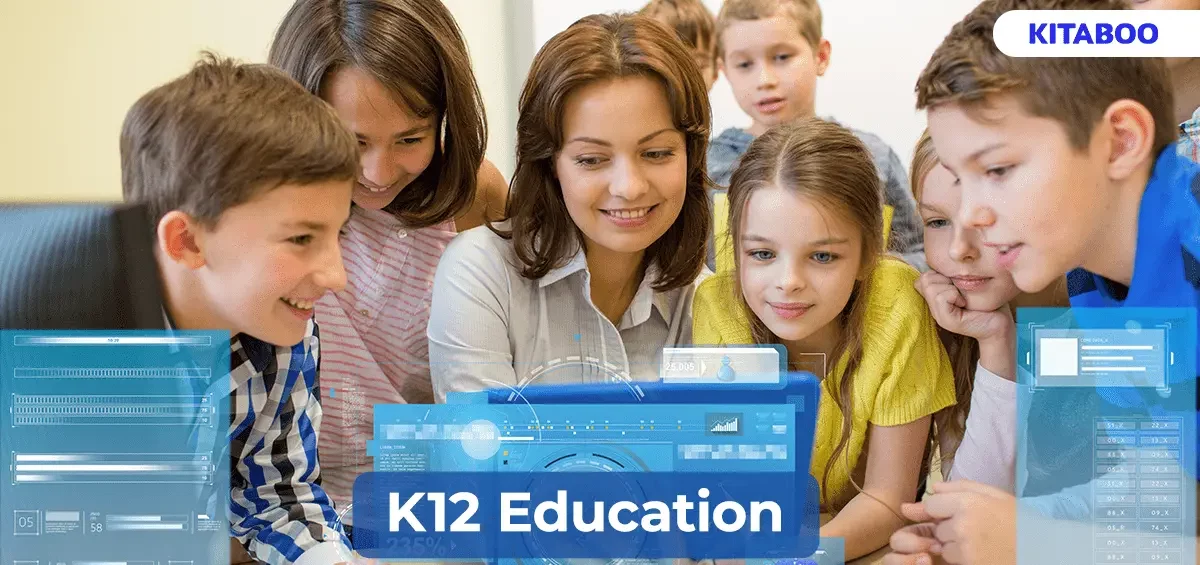The use of technology in education has seen a dramatic shift in recent years, with virtual learning becoming increasingly commonplace in K12 organizations. With the potential to revolutionize the way students learn and make the educational process more accessible and engaging for students regardless of their physical location; educational capabilities are growing by leaps and bounds.
Teaching with technology plays a crucial role in supporting virtual learning, encouraging active learning, knowledge development, and exploration in the teaching and learning process through digital alternatives, including interactive whiteboards, online learning materials, and educational software.
This article explores how recent educational technologies, and cutting-edge learning trends have transformed the K12 classroom.
Table of Contents
- How Teaching with Technology Enhances K12 Education
How Teaching with Technology Enhances K12 Education
1. Innovative Lessons Develop Instructors' Technical Expertise While Nurturing Students' Critical Thinking Skills
With the ever-evolving digital landscape, educators must possess the ability to harness technology to equip students with the necessary skills to excel in the modern world. By providing students access to technology-based educational tools, educators can introduce students to valuable learning experiences and empower them to apply critical thinking and technology skills to learning.
Integration of technology in teaching enables the development of multimedia-based learning solutions.
Creating and incorporating interactive elements such as animations and presentations into lesson plans necessitate instructors to sharpen their technical proficiency and improvise their teaching approach. Updating concepts nurtures students’ abilities by enabling them to explore their interests, refine their craft, and acquire the confidence to pursue their objectives.
Technology that employs digital instructional strategies optimizes concentration and engagement during class interactions by promoting reflective thinking skill development, better problem-solving, self-regulation, and reasoning abilities.
2. Simplified Lesson Building and Interactive Interface Enhances Retention
Lesson building becomes a simplified process when educational resources are available through a common learning platform.
Teachers may obtain educational material from diverse sources and compile and formulate lesson plans embedded with interactive videos, quizzes, pre-recorded lectures, and external websites that extend the course beyond textbooks for a concrete and comprehensive learning experience.
Teaching with technology boosts student engagement and enables instructors to effectively convey complex topics from a simplified perspective for greater comprehension and retention of the learning material.
3. Customized Learning Options
eLearning technologies allow instructors to create a robust and impactful customized learning environment tailored to the individual’s needs and capabilities while providing them with the feedback and support they need to reach their full potential.
Instructors can create customized K12 learning modules by harnessing digital tools that accommodate individual learning styles and preferences and facilitate targeted personalized instruction. Instructors may incorporate as many compulsory readings, video lectures, quizzes, and assessments as they deem fit.
Virtual tools aid in assigning activities, monitoring student engagement, and communicating with parents to convey student progress. Each K12 institution can individualize its platform to suit its students and ensure they receive customized learning paths and personalized content.
Teaching with technology thus keeps students and instructors on the same page by increasing engagement and catering to individual needs allowing all students to obtain mastery over challenging coursework and subjects.
Data from integrated assessments help teachers track student success and identify pupils who need additional practice or training in certain concepts. This enables teachers to modify the course path for each student and yield individual academic progress.
Student feedback is another relevant data that assists in implementing a positive learning environment in the classroom for better learning outcomes. Some content platforms go above and beyond by offering or suggesting resources in response to a student’s evaluation.
4. Enables Diverse Assessment Options and Reduces Manual Work in Administrative Tasks
Digital publishing offers solutions that enable teachers to centralize administrative tasks and eliminate the need to log into numerous programs to examine student work, monitor progress, and report grades.
Assessments can be executed online in multiple formats, including short tests, multiple-choice questions, and questionnaires to fetch immediate feedback. Real-time formative assessment tools assist teachers in recognizing students’ strengths and areas for improvement and accordingly adjust instructional and delivery strategies to enhance student comprehension.
Automating grade calculation and other repetitive procedures allows the educator to allot more time and focus on crucial responsibilities, saving precious time and resources and attaching value to the overall education system.
Deploying AI grading reinforces time and cost efficiency by simplifying the grading system and generating quick assessment results while maintaining accuracy. Since the grading system is transparent, sparing no room for manipulation through external intervention, it ensures efficient outcomes.
The Bottom Line
Computer-driven tech trends in education have ushered in numerous modifications in the teaching and learning process, as educators are no longer limited to the traditional pen-and-paper methodologies.
The growing popularity of virtual learning and open online courses have fuelled the rise of technology in K12 education. eLearning technologies bridge the virtual divides by overcoming demographic restraints and establishing a safe and inclusive atmosphere in a diverse classroom community, regardless of location or physical capacity to participate in class.
Teaching with technology, including digital tools and analytics, promotes knowledge development and alters the way individuals study inherently. K12 organizations must invest great thought into evaluating both the existing and emerging technologies to design course instruction leveraging game-based strategies and employing collaborative learning tools for maximizing student engagement.
Technology thus forms an integral component of the educational process, allowing students exposure to learning resources and opportunities to help them engage with various academic experiences and develop new skills and competencies.
KITABOO is an all-inclusive digital publishing platform with multi-device compatibility that seamlessly integrates with your existing LMS to effectively manage and deliver a wide range of course content online.The efficient reporting, analytics, and assessment tools simplify all digital aspects of the classroom, creating immersive virtual learning experiences.
To know more, write to us at KITABOO@hurix.com.
Discover How An Ebook Conversion, Publishing & Distribution Platform Can Help You
Kitaboo is a cloud-based content platform to create-publish & securely distribute interactive mobile-ready ebooks.
You May Also Like






